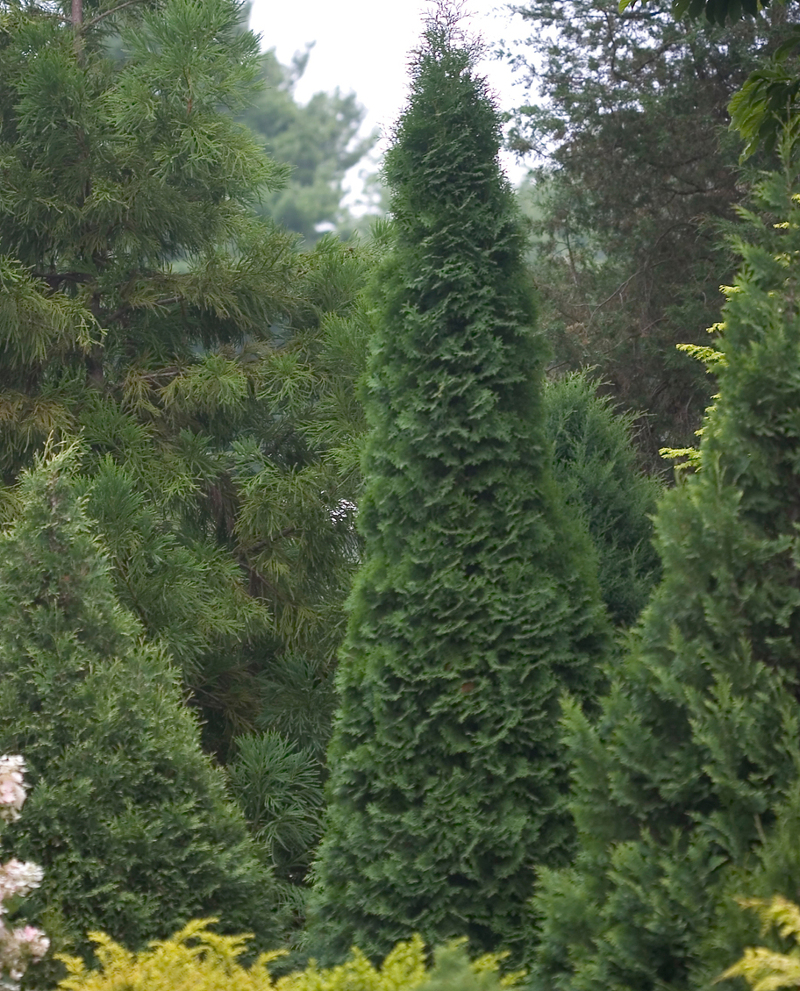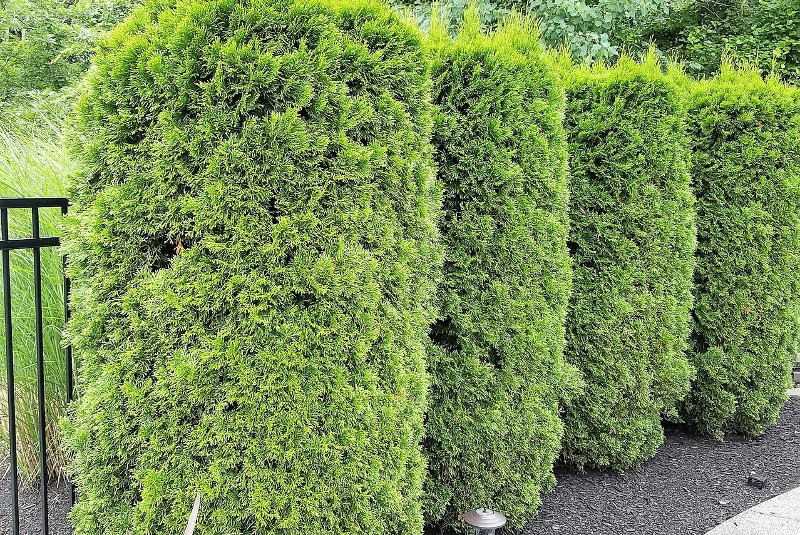Arborvitae are a very common shrub grown in the United States due to the plants being low maintenance and having beautiful evergreen foliage. Some varieties are also very fast growing, and make perfect privacy hedges, wind breaks, and natural borders. Because arborvitae are native to North America, the shrubs and trees do just fine without fertilizing.
Newly planted arborvitae should not be fertilized. It could lead to fertilizer burn on young plants with root systems that are shallow and not yet developed. It is recommended that you use nutrient rich soil when planting instead of applying fertilizer.

Mature and established arborvitae can be fertilized to help speed up growth rate and help the plant grow stronger branches. It will also help encourage green leafy foliage and speed up the growth rate each year.
If the plant looks sick, do not turn to fertilizer. It could stress the plant even more and will often kill the bush or tree. More often than not, the wrong amount of watering is the problem. Either too much water, soil that doesn’t drain well, or too little water is the problem. And fertilizing will only make matters worse.
How to Fertilize Arborvitae
Fertilizing arborvitae is very easy. Simply read the directions on the label of the fertilizer container you have. When applying the fertilizer, ensure that the soil around the plant is well watered. This helps the fertilizer dissolve and be available to the roots. It also helps prevent fertilizer burn. Keep the granules away from the trunk area, but above the root system if possible.
For advanced gardeners, you can do a soil test before applying fertilizer. This can help determine the pH of the soil and guide you to which type of fertilizer you should apply to the soil to help it move more alkaline or neutral.
Best Time To Fertilize Arborvitae
The best time of the year to fertilize is in the early spring before new growth emerges from the plants. This is the only time you should feed arborvitae because doing so at the wrong time of the year could help encourage the plants to put energy into growing foliage instead of developing a stronger root system. The new growth may not have time to harden off before winter and would be more susceptible to dieback. Only fertilize once per year, but you can apply a slow-release fertilizer, which will continue to feed the plant during the growing season.

Best Fertilizer For Arborvitae
We recommend using slow release fertilizer that has 50% nitrogen and has a high first number, like a 12-6-4 or 10-8-6 mixture. Granualized fertilizer works the best because it helps prevent the roots from burning and allow you to only fertilize once per year. Do not use fertilizer designed for acid loving plants, use a fertilizer designed for evergreens.
Arborvitae Fertilizing Tips
- Do not fertilize newly planted arborvitae
- Use a slow release granular fertilizer designed for trees
- Apply once per year in early spring
- Water thoroughly to help dissolve the fertilizer
Warnings
-Always wear protective gloves and a face mask when handling chemical fertilizers.
-Closely follow all directions and storage guidelines that are on the fertilizer label.
 |
Author Chris Link - Published 12-13-2019 |
